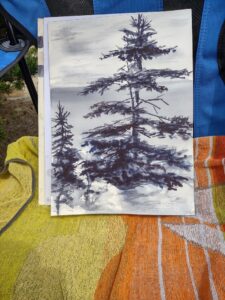
Because I’ve been eating, drinking, sleeping and thinking nothing but grisaille recently, I decided to invert my usual lesson plan and start my Sea & Sky workshop at Schoodic Institute with a lesson on monochromatic underpainting.
We started with a soft blue sky that gradually resolved to a lovely milkiness and then to glumness as evening drew in. (It’s forecast to get downright surly before it clears.) But my students had strong value structures, which carried them over the rough passages.
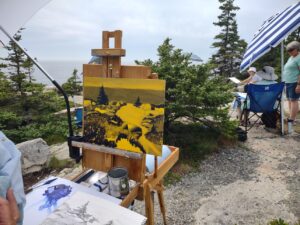
Simplify, baby
Plein air painting can be challenging even without constantly changing light. By concentrating on value, my painters were able to focus on the bones of their painting without getting wrapped around the dual axles of hue and chroma. (A review of those terms can be found here.) As I wrote on Monday, value is king.
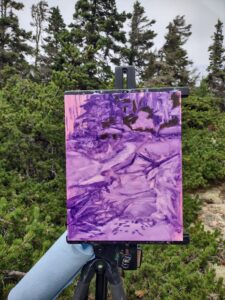
Let’s hustle
I’m writing this at 0:dark:30 on Tuesday morning as we try to figure out if and when the threatening storm will hit us. Don’t worry; I have a backup plan; in this case, it’s fervent prayer.
I normally write my posts the night before they’re published, but my students Karen and Diane have planned a cocktail party for Tuesday evening. We’re going for a short hike on the Sundew Trail before class, so I got up especially early to write.
I like speed and efficiency in painting too. I want to attack my color passages au premier coup, or at the first shot, instead of dithering about mixing and laying colors repeatedly on the same small section of canvas. That’s a surefire recipe for mud, whether you’re painting in oils or watercolor.
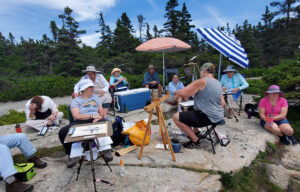
And then there’s the brain
Grisaille is an excellent way for artists to train their eyes and minds to observe value and see underlying composition. It helps us to become more sensitive to the nuances of light and shadow, which are crucial for plein air (and indeed, all) painting.
Remember when I said ‘value is king’? Its co-regent is composition. Every other element of painting is subservient to this pair.
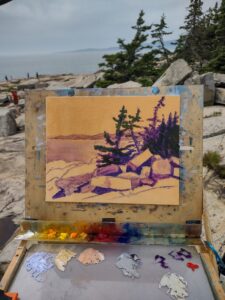
Let’s just screw around
I do my best experimentation with either a pencil or a brush in the grisaille phase. That’s where I can figure out the texture of a blueberry barren or the shape of clouds. It’s infinitely easier and faster than trying to do it in full color.
A wee anecdote from Monday’s class
A young girl, a member of a religious sect, stopped to observe us painting. She is interested in art, so Karen explained the value of a drawing practice. “Carol draws everywhere,” she said. “She even draws in church.” She told her the kind of things I draw in church, which you can find on my Instagram feed. “You could draw in church, too,” Karen added.
“I could never do that!” the young lass exclaimed.
I’m the poster child for hyperactive inattention. I believe drawing calms me down enough to open my ears. I’m not much of a believer in multitasking, but that’s one place where I think it works.
My new class, The Essential Grisaille, is available now.
My 2024 workshops:
- Painting in Paradise: Rockport, ME, July 8-12, 2024.
- Sea & Sky at Schoodic, August 4-9, 2024.
- Find your authentic voice in plein air: Berkshires, August 12-16, 2024.
- Art and Adventure at Sea: Paint Aboard Schooner American Eagle, September 15-19, 2024.
- Immersive In-Person Workshop: Rockport, ME, October 7-11, 2024.

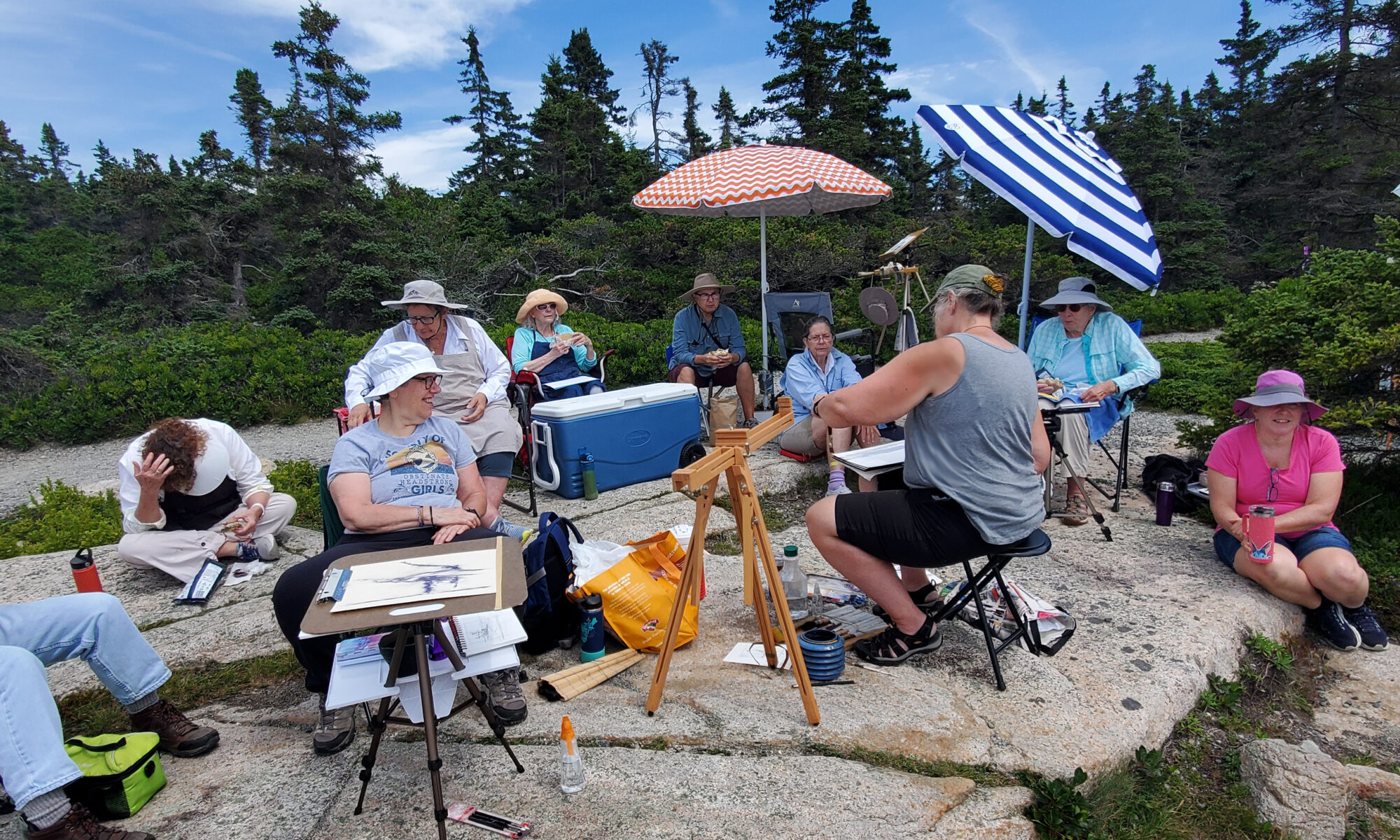
Enjoyed reading this and miss you all.
I once drew a small pencil portrait of my pastor as he was speaking. When he saw it later, he said something like “you’ve really got something there”. I was so encouraged that I decided to quit church music and pursue visual art.